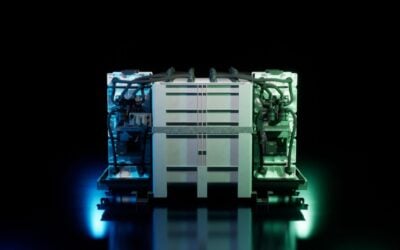
Greater deployment of renewable energy and battery storage in Illinois would help mitigate soaring costs of capacity market auctions in the PJM Interconnection territory.
Advocacy groups Citizens Utility Board (CUB) and Clean Grid Alliance weighed in with that sentiment after the latest PJM Reliability Pricing Model (RPM) auction results were announced this week (22 July).
The prices were 22% higher than in 2024’s auction for capacity in the 2025-2026 delivery year.
The competitive solicitation for capacity for the 2026-2027 delivery year concluded with prices at US$329.17/MW-day. The Citizens Utility Board, which advocates for Illinois consumers, said costs would have been even higher if a negotiated price cap had not been in place.
Try Premium for just $1
- Full premium access for the first month at only $1
- Converts to an annual rate after 30 days unless cancelled
- Cancel anytime during the trial period
Premium Benefits
- Expert industry analysis and interviews
- Digital access to PV Tech Power journal
- Exclusive event discounts
Or get the full Premium subscription right away
Or continue reading this article for free
Prices have risen yearly since the RPM auction was first held in 2017. In the 2022-2023 auction, the cleared price was US$50/MW-day, and in 2025-2026, prices jumped around 830% from the previous year’s US$28.92/MW-day to US$269.92/MW-day.
Not only that, but since the auction for 2023-2024 capacity, the procured capacity has got smaller each year, from 144,870.6MW in that year to 134,311MW in the most recent staging.
The results announced this week included approximately 1,200MW of battery energy storage capacity, and around 5,000MW of renewable energy, including wind and solar PV.
Peter Berini, director of industry for the US at BESS market intelligence firm Modo Energy, said in a post on LinkedIn yesterday that one of the main factors behind the rising cost is the surge in demand from hyperscale data centres in the PJM market.
“PJM, already the epicentre of US data centre activity, now faces a capacity outlook so tight that its market monitor has said plainly: there is no spare supply. Developers looking to serve AI and compute loads are being told to bring their own generation,” Berini wrote, adding that demand from AI and data centres is “driving up the baseline” and ensuring that “the value of firm and flexible capacity looks set to remain elevated.”
‘Extended price spike was preventable’
CUB and Clean Grid Alliance said that Illinois electric customers in the ComEd transmission and distribution (T&D) service area of PJM would inevitably bear price spikes in their bills again this year as a consequence.
Both groups said in separate statements that increased participation by battery energy storage systems (BESS) and low-cost renewables would help mitigate the impacts.
“While we are relieved that the negotiated price cap prevented capacity costs from soaring even higher, this record price spike is unacceptable. CUB is deeply concerned that ComEd customers will continue to bear painfully high costs for another year, largely because of policy shortcomings from PJM,” CUB executive director Sarah Moskowitz said.
“The power grid operator’s policy decisions too often favour outdated, expensive power plants and needlessly block low-cost clean energy resources and battery projects from connecting to the grid and bringing down prices.”
Clean Grid Alliance said the average Illinois homeowner in ComEd territory will be hit with a substantial cost increase from June 2026, in addition to a recent 20-25% price rise.
“Today’s capacity auction results yet again demonstrate that the ComEd zone needs more capacity to satisfy growing demand for power. The fastest and cheapest way to get this additional capacity for customers is to build battery energy storage projects and build them now,” said VP of advocacy at Clean Grid Alliance, Jeff Danielson.
CUB noted that auction prices were even higher in other states within the PJM Interconnection regional transmission organisation (RTO) and independent system operator (ISO) territory that spans all or part of 13 US states and the District of Columbia.
Baltimore Gas & Electric Zone (BGE) in Maryland saw prices at US$466.35/MW-day. Dominion Energy’s service areas in Virginia and North Carolina hit US$444.26/MW-day.
The good news, for Illinois at least, is that activities are underway to direct the state’s first competitive solicitations for energy storage through the Illinois Power Agency.
In May, staff at the Illinois Commerce Commission (ICC) made recommendations for the procurement programme, which under its proposals would make standalone facilities of over 20MW output, 4-hour duration and minimum 85% round-trip efficiency (RTE) eligible.
State Senator Bill Cunningham and Representative Marcus Evans introduced a bill in March that would set the state a 15GW storage deployment target along with reducing energy bills in Illinois.
In the Clean and Reliable Grid Affordability Act (SB40) legislation, which has been proposed since then, the targets have been pared back from Evans’s bill to 3GW by 2030 to replace 3GW of fossil fuel retirements and a minimum of 6GW of storage operational by 2035.
SB40 would also make other amendments to state energy policy, including establishing a virtual power plant (VPP) programme and rebates for VPP participation, Renewable Portfolio Standard (RPS) reforms and interconnection reforms, among others.
“The Illinois legislature is long overdue to pass legislation that instructs the Illinois Power Agency to procure low-cost battery storage projects to save ratepayers money,” Clean Grid Alliance’s Jeff Danielson said, referring to studies from the Illinois Power Agency and its Power Bureau which he said showed 6GW of storage could save ratepayers “billions of dollars a year in direct energy costs and PJM capacity costs.”
“This extended price spike was preventable,” CUB’s Sarah Moskowitz said.
“It ramps up the urgency of implementing long-term reforms at PJM and comprehensive energy legislation in Illinois, such as the Clean and Reliable Grid Affordability Act, to protect customers from price spikes that serve only to give power generators windfall profits.”





